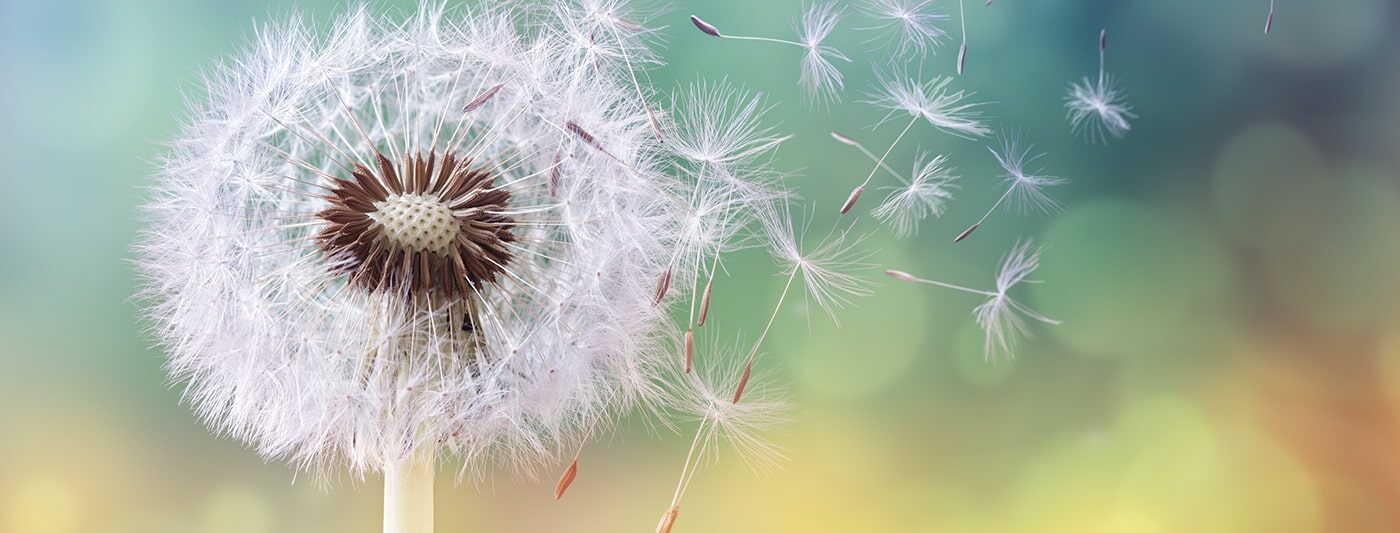It’s that time of year again. Pollen season in the North East hits full swing, so much so that I can see the layer of yellow dust coating our car. If you suffer with seasonal allergies (or hay fever), it can really be miserable this time of year.
What happens in a seasonal allergic reaction?
In sensitized individuals, allergens in our environment such as pollen, trigger the production of IgE antibodies. These immune molecules cause mast cells and basophils to release histamine and other allergy-mediating molecules, which lead to inflammation of the nasal airways and eyes, itching, swelling and mucus production. And, not least, fatigue and irritability as a result! Understanding this process helps explain how different food and lifestyle measures can intervene to modulate that immune response and decrease symptoms.
What natural steps can we take to reduce symptoms?
First of all, do what you reasonably can to reduce exposure within reasonable limits. This can involve using HEPA filters in the home, showering before bed or when you come in at the end of the day to remove pollen especially from your face and hair, washing bed clothes more frequently, and nasal irrigation with a neti pot.
Next, we can look at diet, since it has a direct effect on immune system function, and can directly affect levels of inflammation and histamine in our body. Oftentimes, allergic responses are exacerbated when the body is overloaded with triggers, and diet is an obvious place to start decreasing that burden. Not only that, our diet offers incredible opportunity to drive anti-inflammatory and anti-histamine activity in our body. Here’s what you can do:
- Eat a ‘clean’ diet as much as possible. This means reducing or avoiding pro-inflammatory foods, especially high sugar and refined foods and food additives. Choose organic where you can to reduce pesticide exposure. Try our anti-allergy tea here!
- Avoid trigger foods. For some individuals, seasonal allergies can be triggered or exacerbated by certain foods, especially dairy. You might consider a 6-week dairy elimination, or a full Elimination Diet, which removes a broader array of common food allergens. Follow this with a carefully-structured reintroduction of foods to identify culprits.
- Support a healthy intestinal barrier. A ‘leaky’ intestinal barrier is heavily implicated in immune-related disease including seasonal allergies. That Elimination Diet is a good start, along with probiotics, prebiotics, betaine HCl, enzymes, and gut-healing nutrients such as L-glutamine and zinc L-carnosine.
- Base your diet on anti-inflammatory foods. Include in your diet an abundance of colorful vegetables that are high in anti-inflammatory flavonoids and antioxidants. Use herbs and spices liberally, since their content of anti-inflammatory compounds is especially dense. Choose wild or grass-fed animal foods, for a more anti-inflammatory nutrient profile. Find dietary sources of omega-3 fatty acids such as wild-caught salmon, flaxseed, or chia seed. Try our delicious anti-allergy salad here!
- Target specific anti-histamine foods. Specific foods also contain quercetin or anthocyanins, which have anti-histamine or mast-stabilizing properties. Quercetin-containing foods include apples, broccoli, citrus, fennel and red onion. Anthocyanin-containing foods include berries, cherries, grapes, red cabbage, red onion and wild rice. Anti-histamine properties are also found in parsley, thyme, turmeric, ginger, chamomile, nettle and Holy Basil (Tulsi).
- As importantly, get yourself properly hydrated. You should aim to consume about half your body weight (lbs) in fluid ounces, spread throughout the day. Proper hydration reduces the histamine response.
Another important consideration is stress. Yes, stress! It turns out that “perceived stress” drives allergy flares (although the biochemistry of stress is rather ‘real’, not at all ‘perceived’). Tap into what works for you to both reduce triggers of emotional stress and manage that stress response, whether it be exercise, supportive relationships, breathing techniques, mindfulness or meditation.
If symptoms do not resolve with these strategies, there be more underlying factors at work. That’s where targeted evaluation of nutritional and metabolic status through lab work and desensitization techniques such as sublingual immunotherapy can provide further options.
It’s a shame not to enjoy this otherwise beautiful time of year!
References
Rentzos G, Lundberg V, Stotzer PO, Pullerits T, Telemo E. Intestinal allergic inflammation in birch pollen allergic patients in relation to pollen season, IgE sensitization profile and gastrointestinal symptoms. Clin Transl Allergy. 2014 May 30;4:19.
Patterson AM, Yildiz VO, Klatt MD, Malarkey WB. Perceived stress predicts allergy flares. Ann Allergy Asthma Immunol. 2014 Apr;112(4):317-21.
Rakel D (ed.). 2012. Integrative Medicine. Elsevier Saunders. 3rd ed.
Pizzorno JE, Murray MT. 2012 The Encyclopedia of Natural Medicine. Atria. 3rd ed.
Yamaura K, Ishiwatari M, Yamamoto M, Shimada M, Bi Y, Ueno K. Anthocyanins, but not anthocyanidins, from bilberry (Vaccinium myrtillus L.) alleviate pruritus via inhibition of mast cell degranulation. J Food Sci. 2012 Dec;77(12):H262-7.
Roschek B Jr, Fink RC, McMichael M, Alberte RS. Nettle extract (Urtica dioica) affects key receptors and enzymes associated with allergic rhinitis. Phytother Res. 2009 Jul;23(7):920-6.
Disclaimer: This information is intended for educational purposes only. Please consult with a qualified practitioner.
Need more help with seasonal allergy symptoms? We recommend the following online programs that provide educational materials, resources, and supplements to keep you allergy free.


 Allergies – Why Our Approach to Hygiene has Been so Wrong
Allergies – Why Our Approach to Hygiene has Been so Wrong